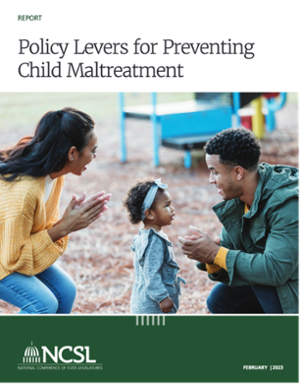 When adults are able to meet the needs of their families – starting with the most basic such as quality housing, food, healthcare, and childcare – it creates a solid foundation for safe and healthy child development. Conversely, multiple family stressors increase the risk of parental overload. This, in turn, increases incidences of child abuse and neglect and child welfare involvement.
When adults are able to meet the needs of their families – starting with the most basic such as quality housing, food, healthcare, and childcare – it creates a solid foundation for safe and healthy child development. Conversely, multiple family stressors increase the risk of parental overload. This, in turn, increases incidences of child abuse and neglect and child welfare involvement.
The bipartisan National Conference of State Legislatures (NCSL) performs research, prepares policy briefs, and supports state legislatures with training and collaboration opportunities on a wide variety of issues, including human services and child welfare. They recently published the report, Policy Levers for Preventing Child Maltreatment, outlining policy levers which, when activated, are demonstrated through evidence to reduce rates of child maltreatment.
According to an NCSL survey, most legislators agree with a collaborative, multi-layered approach with a focus on prevention efforts. Let’s help our policymakers see the clear connection between community-level supports and the reduction of child abuse and neglect.
Here are the Five Takeaways for Legislators:
- Economic and tax policies, such as job creation, minimum wage, family leave, state earned income tax credits, child tax credits, cash assistance and direct cash transfers can help families accumulate economic resources sufficient to reliably meet their basic needs. These policies mitigate the impact of hardship on families and buffer against economic shocks, such as job loss or health crises which can be risk factors for child maltreatment and child welfare involvement.
- Concrete supports, such as childcare, housing assistance, food assistance, health care and flexible funds can prevent child maltreatment and child welfare involvement by alleviating specific stressors for eligible families.
- Expanding eligibility and reducing administrative burdens helps those most in need of public benefits (e.g., TANF, Medicaid, SNAP and WIC) access the programs for which they are eligible and helps these programs fulfill their purpose. High administrative burdens are associated with reduced program utilization by eligible families, thereby limiting the potential of these programs to reduce risk factors for child maltreatment and child welfare involvement.
- Revisiting child welfare policies that address mandatory reporting, child abuse hotlines, abuse and neglect definitions, family preservation and access to legal counsel provide important opportunities to reduce unnecessary involvement with child protective systems.
- Engaging parents, families and young adults with lived experience in policy design and implementation can help ensure policies reflect the priorities and needs of families and meet their intended goal of preventing child maltreatment and child welfare involvement.
The policy strategies in the report align with what CPS-impacted parents say they need for their families (read more parent perspectives HERE and HERE) and match the mounting evidence compiled by Chapin Hall linking concrete supports to families and reduced child maltreatment.
Use the data presented here and the policy recommendations to advocate for family support and the reduction of child maltreatment in your state.